AWS Certified Developer - Associate
Data Analytics
Kinesis Demo
This guide demonstrates how to work with Amazon Kinesis for streaming dummy data that mimics crypto or stock trading prices. The process involves transmitting data from a Kinesis Data Stream to a Kinesis Firehose Delivery Stream, which then deposits the data in an S3 bucket. In this tutorial, you will learn how to configure each component and run a test using the AWS SDK for JavaScript.
Step 1: Create a Kinesis Data Stream
Begin by navigating to the Amazon Kinesis service page, then create a new data stream.
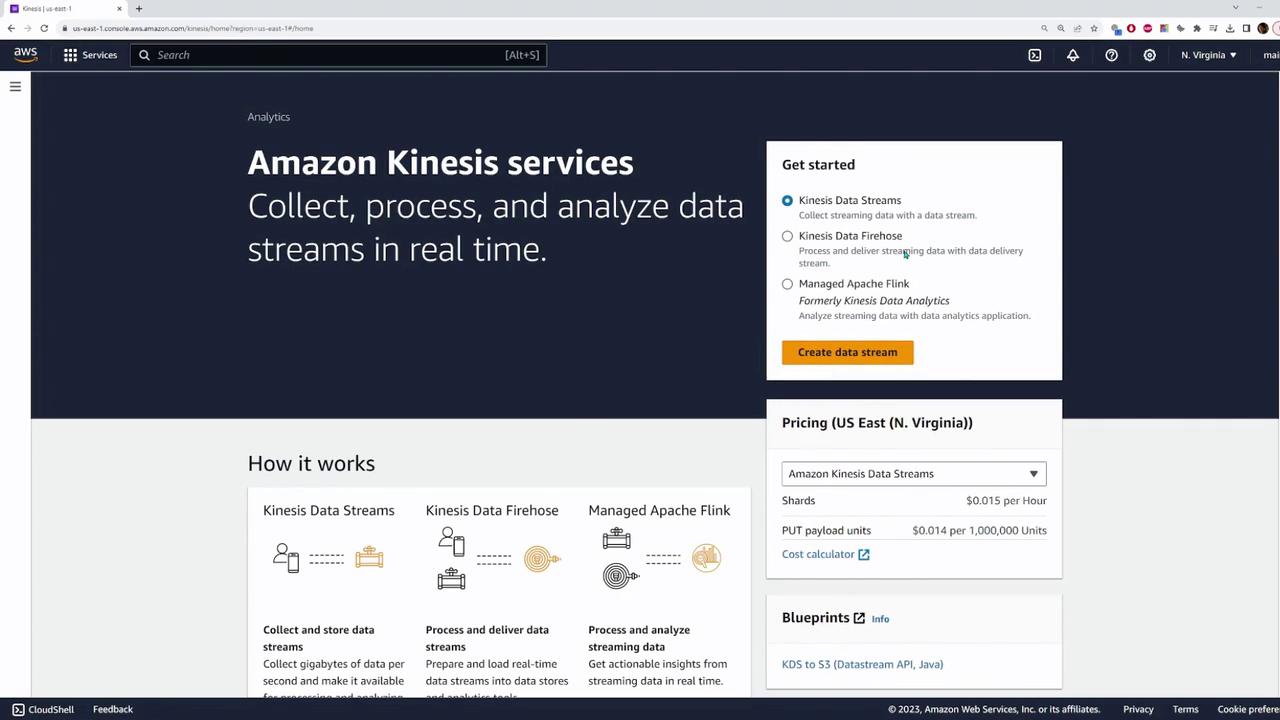
Enter a name for your data stream (e.g., "crypto stock price") and select the most appropriate capacity mode for your use case:
- Provisioned: Choose this mode if you have predefined throughput requirements.
- On Demand: Use this option for dynamic scaling, keeping in mind that it might incur higher costs.
Additionally, review and adjust other available configuration options as needed.
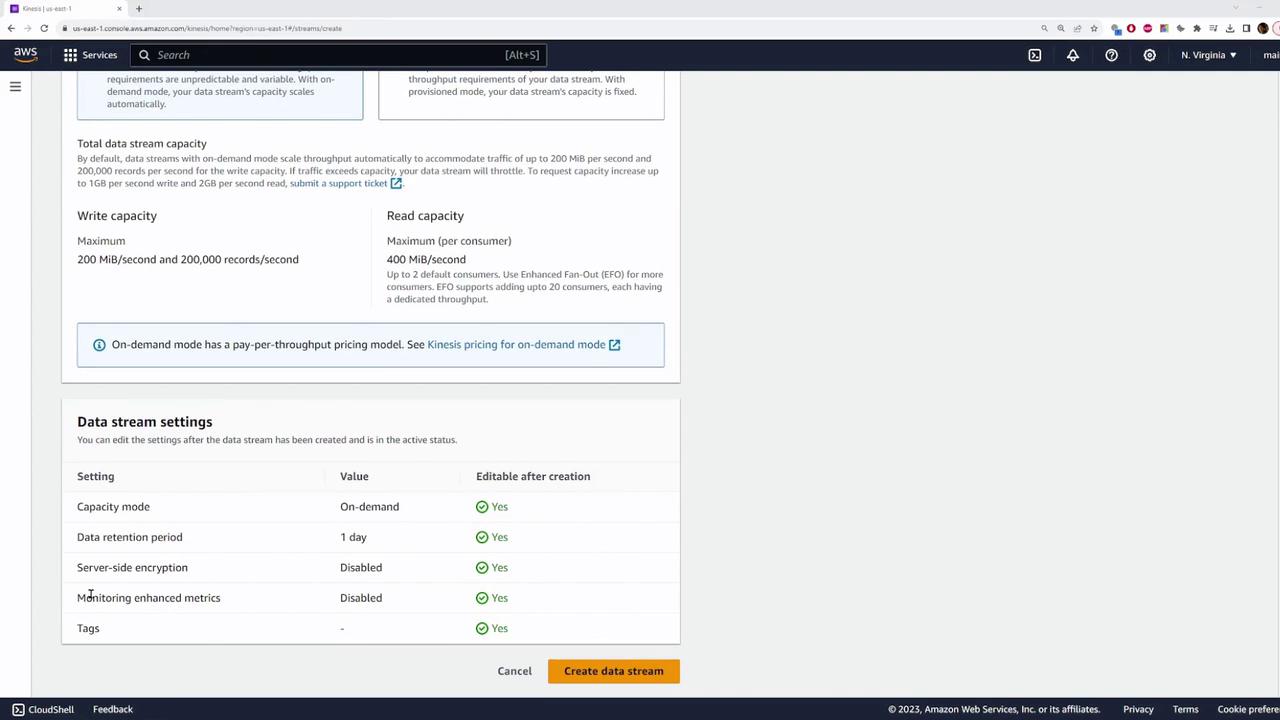
Click on Create Data Stream. Once your stream (named "crypto stock price") is successfully created, proceed to set up the Kinesis Data Firehose.
Step 2: Configure the Kinesis Data Firehose
Set up a Kinesis Data Firehose delivery stream to channel data into an S3 bucket. Follow these steps:
- Source Selection: Choose the Kinesis Data Stream you just created as the data source.
- Destination: Set the destination to an S3 bucket.
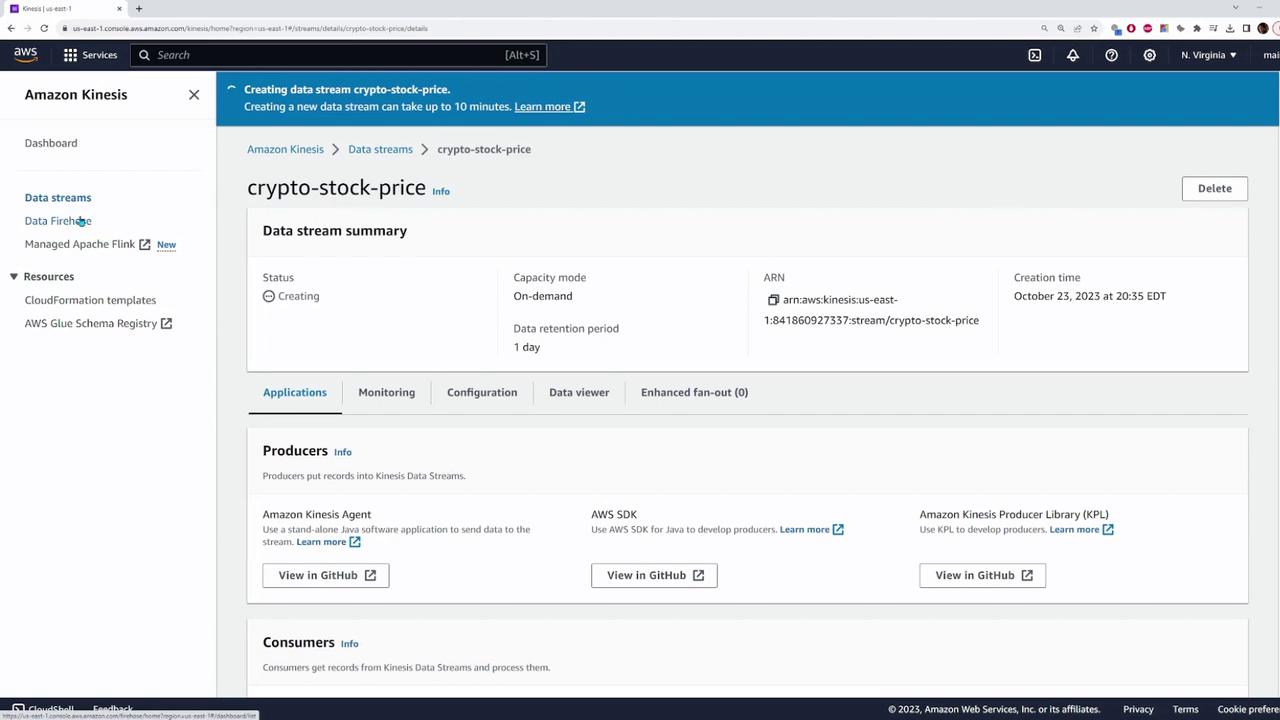
If needed, enable data transformation by configuring a Lambda function. This feature is useful when you need to modify record formats. For demonstration purposes, we will use the default settings.

Before completing the Firehose configuration, confirm that an S3 bucket is available. If you do not have one, create a new bucket (using "Kinesis Code Cloud demo" as an example). Refresh or browse for your bucket, then finalize the setup by keeping the remaining settings at default and clicking Create Delivery Stream.
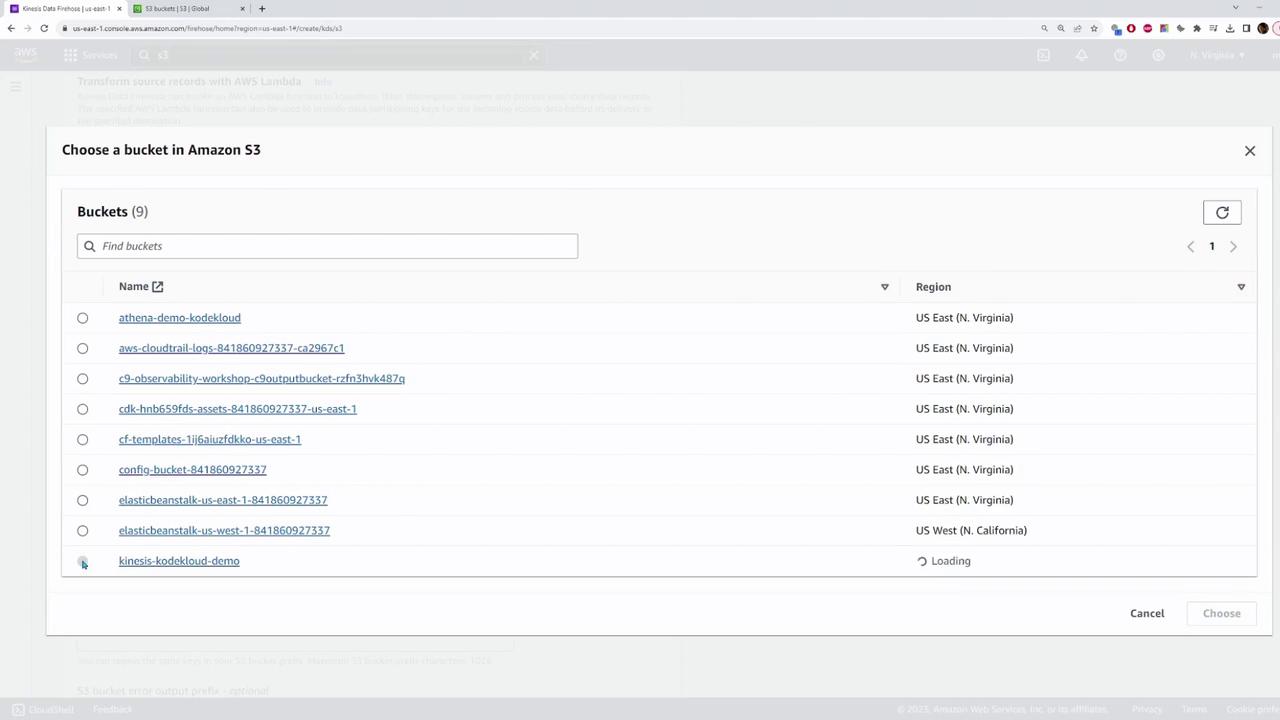
Step 3: Send Test Data to the Data Stream
Once your data stream and Firehose are configured, test the setup by sending sample data to the Kinesis Data Stream using the AWS SDK for JavaScript.
The following code snippet demonstrates how to construct a record and send it to the data stream:
const input = {
// Required PutRecordInput parameters
StreamName: "crypto-stock-price",
Data: Buffer.from(
JSON.stringify({
date: Date.now(),
price: "$" + Math.floor(Math.random() * 40000) + 1,
})
),
PartitionKey: "test" // Required partition key
};
const command = new PutRecordCommand(input);
const response = await client.send(command);
console.log(response);
To simulate continuous data streaming, use the code below. This snippet sends a new record every 50 milliseconds:
setInterval(async () => {
const input = {
// Required PutRecordInput parameters
StreamName: "crypto-stock-price",
Data: Buffer.from(
JSON.stringify({
date: Date.now(),
price: "$" + Math.floor(Math.random() * 40000) + 1,
})
),
PartitionKey: "test"
};
const command = new PutRecordCommand(input);
const response = await client.send(command);
console.log(response);
}, 50);
Assume your workspace is located at:
C:\Users\sanje\Documents\scratch\kinesis
Allow the code to run for a couple of minutes to accumulate sufficient data in both the Kinesis stream and the S3 bucket.
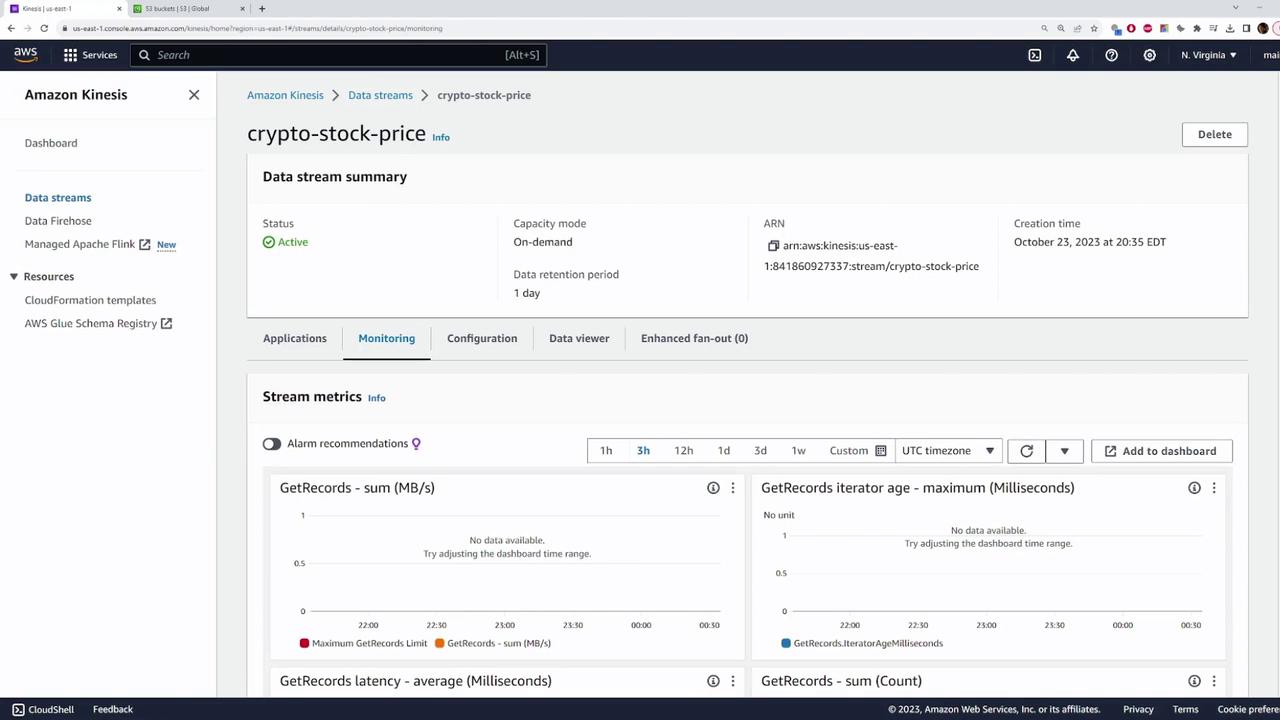
Step 4: Verify Data Delivery in S3
Once the data is processed by the Firehose delivery stream, navigate to your S3 bucket to verify the records. You should observe a directory matching the current date (e.g., "2023") that contains several files with the streamed data.
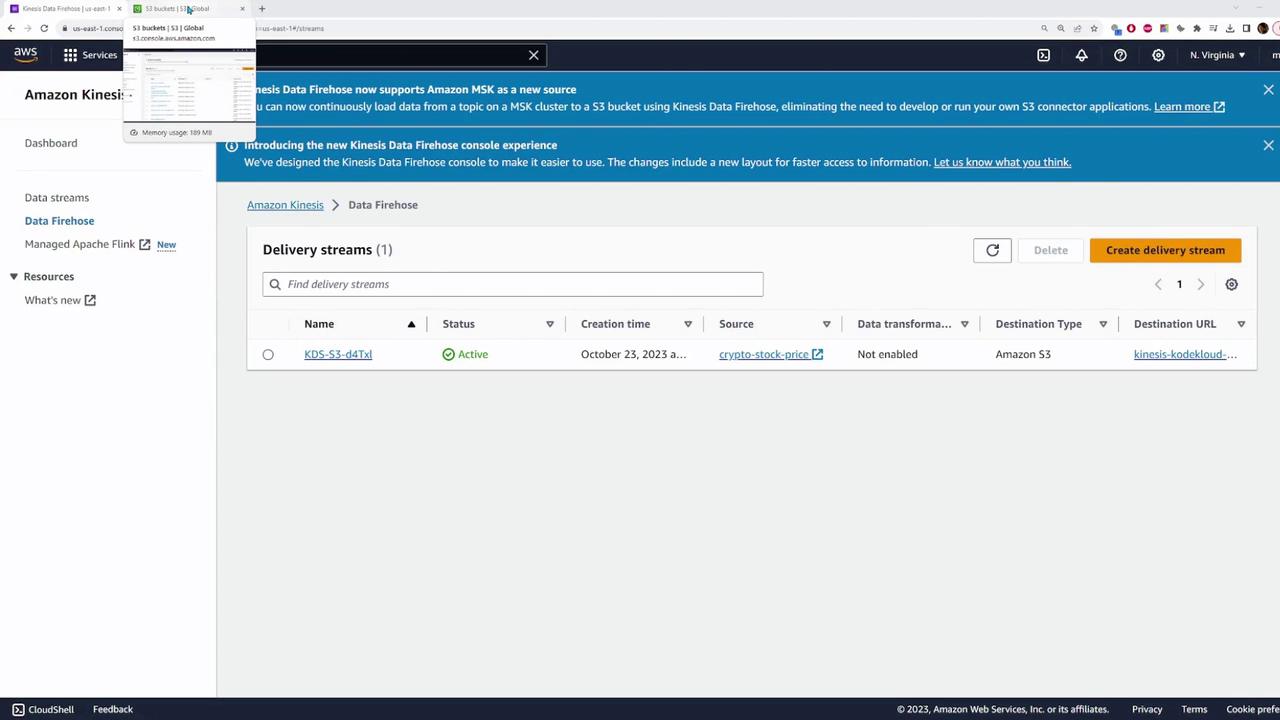
If you open one of these files, the output will appear similar to this:
{"date":169810799318,"price":"$46941"}{"date":169810793259,"price":"$342561"}{"date":169810793368,"price":"$301171"}{"date":169810793418,"price":"$274001"}{"date":169810793469,"price":"$6611"}{"date":169810793487,"price":"$901"}
This output confirms that the data stream has successfully transmitted the records to your S3 bucket.

Note
Ensure that your bucket permissions are correctly set so that Kinesis Firehose can write data to your S3 bucket.
Additional Considerations
While this guide covers the fundamental process of transmitting data from a Kinesis Data Stream to an S3 bucket using Kinesis Firehose, additional features are available. For example, you can utilize Lambda functions for on-the-fly data transformation, which is beneficial if you need to modify the record formats or convert data types.
That concludes this comprehensive demo of setting up and using Amazon Kinesis. We hope this guide helps you effectively integrate and manage streaming data for your applications.
For further information, consult the following resources:
| Resource Type | Use Case | Example Command/Link |
|---|---|---|
| AWS Kinesis Streams | Real-time data ingestion and processing | Amazon Kinesis |
| Kinesis Firehose | Data delivery to S3 and other services | Kinesis Data Firehose |
| AWS SDK for JavaScript | Integrating Kinesis in applications | AWS SDK Docs |
| Amazon S3 | Object storage for streamed data | Amazon S3 |
Happy streaming!
Watch Video
Watch video content